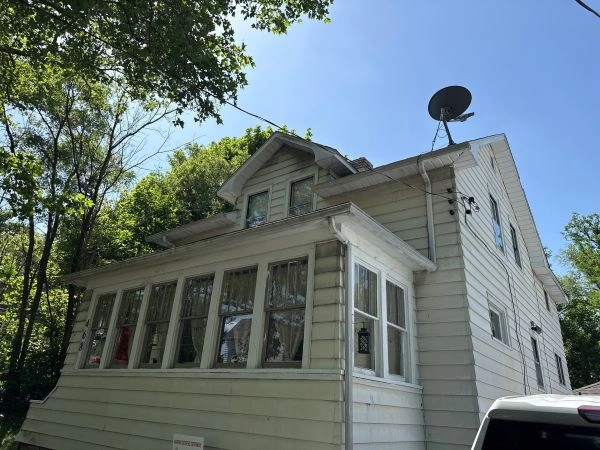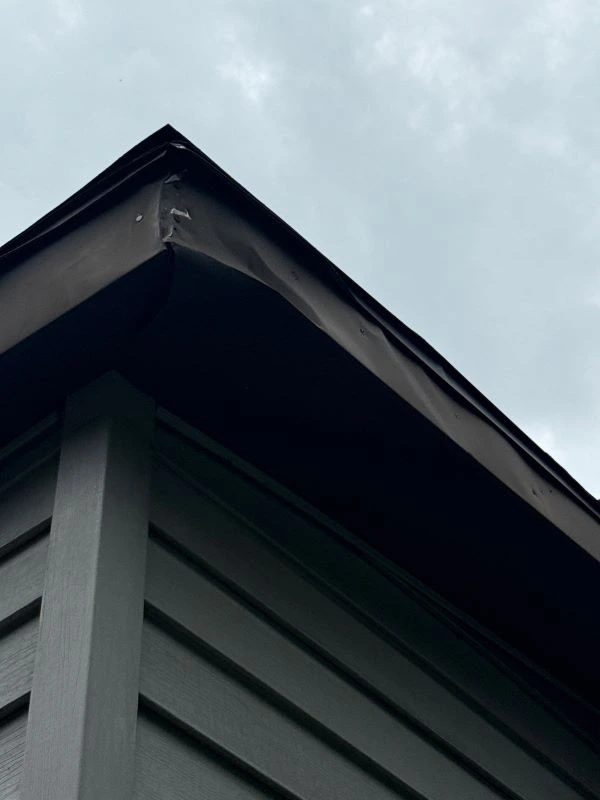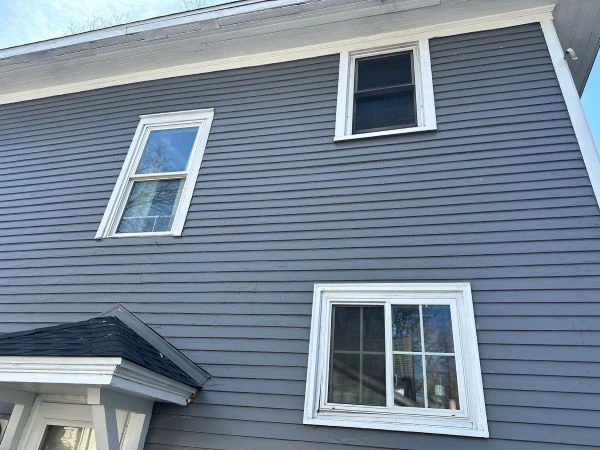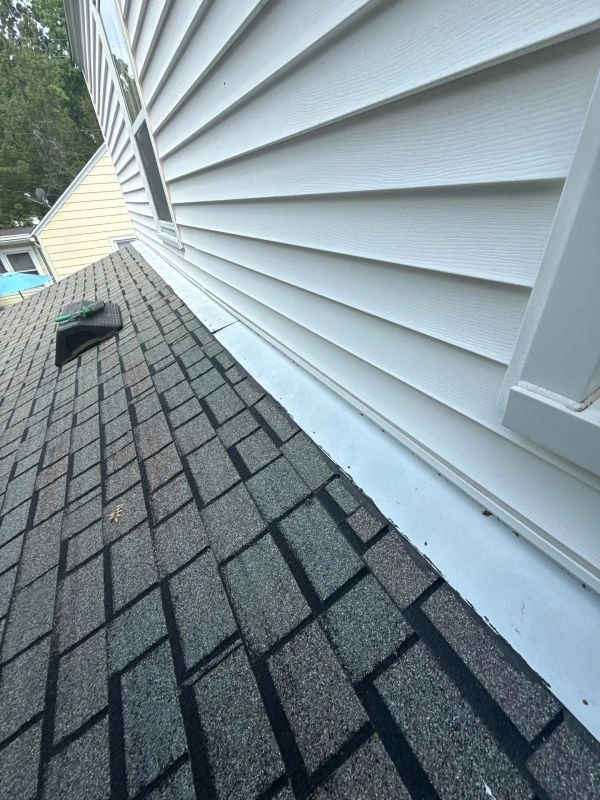Flat Roof vs Sloped Roof: Which Is Better for Your Home?
When it comes to residential roofing, one of the most important decisions homeowners face is whether to install a flat roof or a sloped roof. Both roofing styles offer unique benefits and challenges, and choosing the right one can greatly impact the durability, energy efficiency, and overall value of your home. At Worthy Construction LLC, we specialize in roofing residential projects and understand the factors that go into selecting the perfect roof for long-term protection and beauty.

Understanding the Basics of Flat Roofs
A flat roof is not completely flat—it usually has a slight pitch for drainage. This style is popular in modern architecture and urban homes. Flat roofs are constructed using layers of waterproof materials, making them durable and cost-effective for many homeowners.
Advantages of Flat Roofs
- Modern Aesthetic Appeal
Flat roofs provide a sleek, contemporary look that complements modern residential designs. They create a minimalist appearance that enhances curb appeal. - Cost-Effective Installation
Flat roofs usually need fewer materials and take less time to install, which makes them a more cost-effective option than complex sloped roof designs. - Usable Space
A flat roof can be transformed into a rooftop garden, patio, or solar panel base, offering additional functional living or storage space. - Easier Maintenance
Because of safer access, flat roofs are generally easier to inspect and maintain than steeply pitched roofs.
Challenges of Flat Roofs
- Drainage can be problematic, as water tends to pool if not properly pitched.
- They may require more frequent inspections to prevent leaks.
- Insulation must be carefully managed to maintain energy efficiency.
DIY Tips for Flat and Sloped Roof Maintenance
Even though professional inspections are always recommended, there are a few DIY roofing maintenance tasks homeowners can safely perform:
- Check for Standing Water (Flat Roofs)
After heavy rainfall, walk around and look for pooling water. Remove it manually and call a professional if it occurs frequently. - Clean Gutters Regularly (Both Roof Types)
Clogged gutters can lead to water backup and roof damage. Clean them at least twice a year. - Inspect Shingles and Seams (Sloped Roofs)
Look for curling, cracking, or missing shingles. Even minor issues can quickly turn into leaks. - Remove Debris Promptly (Both Roof Types)
Leaves, branches, and dirt can trap moisture and damage roofing materials if left unchecked. - Trim Nearby Trees (Both Roof Types)
Overhanging branches increase the risk of falling debris and moisture buildup.
Signs You May Need Roof Repair or Replacement
Homeowners often overlook roofing issues until it’s too late. Look for these warning signs to determine whether you need a residential roofing repair or replacement:
- Frequent Leaks
Recurring leaks indicate deeper structural issues that may require replacement rather than repair. - Sagging Roof Deck
A noticeable dip or sagging roofline signals water damage and structural compromise. - Excessive Shingle Loss
Missing or deteriorated shingles leave your roof vulnerable to water infiltration. - Higher Energy Bills
Poor insulation or ventilation in old roofs can cause increased heating and cooling costs. - Roof Age
If your flat roof is over 20 years old or your sloped roof is over 30 years old, replacement may be necessary.
Professional vs DIY Roofing: Why Hiring Experts Matters
While minor tasks can be handled by homeowners, roofing is a major investment that requires professional expertise. At Worthy Construction LLC, our team specializes in roofing residential services that guarantee long-lasting protection, compliance with building codes, and high-quality workmanship. Attempting complex repairs yourself may save money upfront but often leads to more costly damage in the long run.
Maintaining Your Roof for Longevity
Proper maintenance extends the life of your roof and prevents costly repairs. Here are some best practices:
- Schedule annual professional inspections.
- Seal cracks promptly on flat roofs to prevent water intrusion.
- Ensure attic ventilation for sloped roofs to avoid ice dams.
- Apply protective coatings to extend flat roof life.
- Replace damaged shingles or roof flashing immediately.
DIY Tips for Seasonal Roof Care
While professional inspections are vital, homeowners can take steps to maintain their roof year-round:
- Seasonal Inspections: Walk around your home at the change of each season and look for missing or damaged shingles.
- Check Gutters and Downspouts: Ensure they are free of debris to prevent water backup and ice dams.
- Look for Flashing Issues: Examine flashing around chimneys, skylights, and vents for cracks or bending.
- Trim Overhanging Branches: Prevent damage from falling limbs and reduce debris buildup.
- Monitor Attic Conditions: Check for damp insulation, musty odors, or visible light entering through the roof deck.
How to Maintain Your Roof Through the Seasons
- Schedule Professional Inspections Twice a Year: A spring and fall inspection catch seasonal wear before it escalates.
- Keep Gutters and Roof Surfaces Clear: A clean system ensures proper drainage during heavy rain or melting snow.
- Invest in Preventative Repairs: Addressing minor leaks promptly saves money compared to emergency roof leak repair.
- Upgrade Aging Roofs: If your roof is over 20 years old, replacement may be more cost-effective than repeated seasonal repairs.
- Ensure Proper Ventilation and Insulation: These reduce moisture, control attic temperatures, and prolong roof life.
Why Choose Professional Residential Roof Repairs
When seasonal weather damages your roof, DIY fixes aren’t enough. Choosing a trusted contractor ensures lasting results:
- Accurate Diagnosis: Professionals spot hidden issues homeowners often overlook.
- High-Quality Roof Materials: Expert roofers use materials designed to withstand Michigan’s climate.
- Efficient Repairs: Emergency leaks and structural issues are repaired promptly and correctly.
- Warranty Protection: Professional services preserve manufacturer warranties on shingles and other roofing materials.
- Peace of Mind: Hiring experts eliminates the risks of unsafe DIY work on steep, slippery surfaces.
FAQs About Flat Roof vs Sloped Roof
1. Which roof type lasts longer, flat or sloped?
Sloped roofs generally last longer, often 30–50 years, compared to 20–25 years for flat roofs. The slope provides better drainage, reducing the risk of water damage, which extends overall lifespan.
2. Are flat roofs cheaper than sloped roofs?
Yes, flat roofs are more affordable to install due to fewer materials and simpler construction. However, sloped roofs can save money long-term by requiring less frequent maintenance and offering better durability.
3. Can flat roofs handle heavy snowfall?
Flat roofs can support snow loads if built to code, but they require regular snow removal. Sloped roofs naturally shed snow, making them more reliable in regions with harsh winters.
4. What roofing material is best for residential roofing?
Asphalt shingles are the most popular for sloped roofs due to affordability and variety. For flat roofs, materials like EPDM rubber, TPO, or modified bitumen offer excellent waterproofing.
5. How can I tell if I need roof repair or replacement?
Look for recurring leaks, sagging, missing shingles, or rising energy bills. If your roof is beyond its average lifespan, it’s wise to consult a roofing professional for a full inspection.
Final Thoughts
Both flat roofs and sloped roofs have their advantages and challenges. Your choice should depend on climate, budget, design preferences, and long-term goals. At Worthy Construction LLC, we help homeowners make informed decisions and provide expert residential roofing services to ensure maximum protection, efficiency, and beauty for every home. Whether you need a new roof installation, repair, or maintenance, our experienced team is ready to deliver exceptional results.
📞 Call us today at (269) 207-7704
📧 Email: admin@worthyroof.com
🌐 Visit: worthyroof.com






Trustindex verifies that the original source of the review is Google. Worthy Construction just replaced my roof, skylights, and gutters. I live out of town and selling my parent's house so this company came through a personal referral. Khari and team were such a joy to work with. He answered my questions, kept me updated on progress, did everything he said he was going to do, and met all of commitments on time. It's not easy to know what's happening while living out of town and I appreciate Khari's communication skills, timeliness, and overall this has been an amazing experience! I highly recommend Worth Construction!!Trustindex verifies that the original source of the review is Google. Worthy Construction did an excellent job replacing our roof. They were very easy to work with throughout the entire process. They answered all of our questions promptly and delivered a great finished product. I’d highly recommend them for your roofing needs.Trustindex verifies that the original source of the review is Google. Very professional, great guy that will work with you. Highly recommended for sure. Mr. Worthy is very dependable! He completed our roof on time and as expected!Trustindex verifies that the original source of the review is Google. Greatest service ever! Super fast and did a fantastic job. I will definitely save them to do future jobs that need to be fixed. The greatest ever!Trustindex verifies that the original source of the review is Google. My roof was very damaged, I had a huge hole in my roof from constant tree debris and age. I didn’t have any expectations going in to the project but I was greatly impressed with the speed of service! The ten we done in 2 days! They cleaned up afterwards, the materials were great quality and . The team replaced my entire rooftop. Mr. Worthy was very respectful and responsive to my concerns regarding the project, I would certainly recommend his company to anyone looking for a new rooftop!Trustindex verifies that the original source of the review is Google. He was a pleasure to work with. They were prompt and professional the whole project. He kept me informed the whole process and his work was of the highest quality. They were very respectful of my and my neighbor's properties. I am very very happy with the work they did for me.Trustindex verifies that the original source of the review is Google. Quality work! Highly recommended!Trustindex verifies that the original source of the review is Google. I didn't have much word done, but I called after noticing a leak in my ceiling after a storm. Khari answered right away and was able to come and take a look within a couple days. He found the problem and was able to fix if with just caulking for no charge, 100% recommendTrustindex verifies that the original source of the review is Google. We had our roof and some gutters done by Worthy Construction and not only was it very timely, but they also were very friendly. We had the unfortunate experience of having to replace roof sooner than expected and they came and explained everything to us and then gave us options that really worked for us. Khari and his team did a wonderful job for us and I would recommend their service again and again. When they were working on our roof they noticed a leak in one of our gutters and replaced that as well which was very helpful!Trustindex verifies that the original source of the review is Google. I needed a roof replacement, Mr. Worthy worked with me and my insurance company from start to completion. He gave me a time frame and he stuck with it. High praise for him and his professional team.




